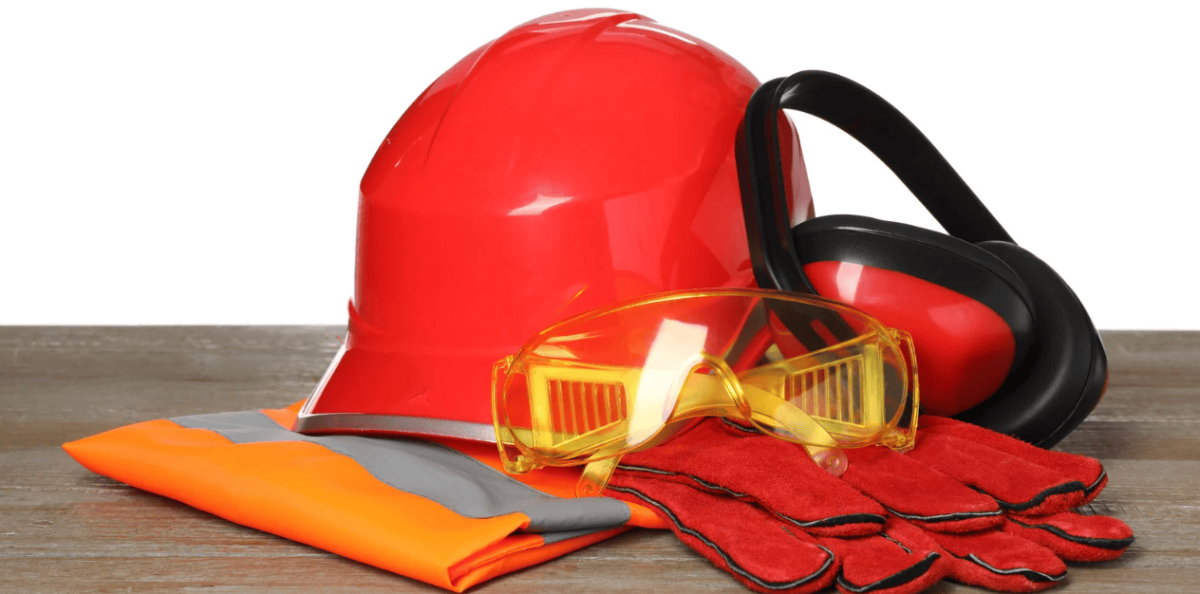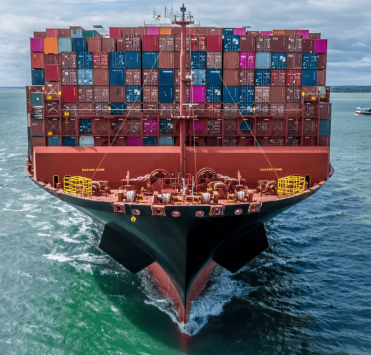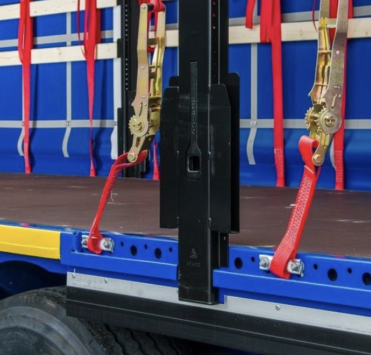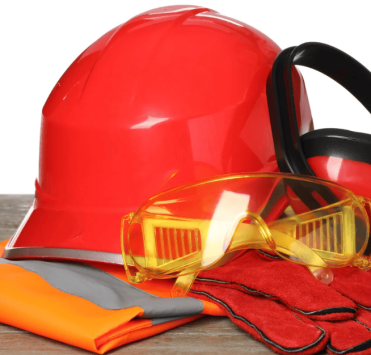Driver equipment for transporting dangerous goods

When transporting dangerous goods, driver safety is a top priority. Every driver must be provided with modern personal protective equipment (PPE) and specialized protective clothing that complies with international standards for the transport of dangerous chemicals.
This mandatory PPE has repeatedly saved lives and prevented injuries during the loading, transportation, and unloading of dangerous goods, including chemical reagents and other hazardous substances. The use of certified protective equipment reduces the risk of accidents and ensures compliance with ADR regulations when transporting dangerous goods. Reliable protection is the key to the safe transport of dangerous goods.
In this article, we will take a detailed look at personal protective equipment that allows drivers to safely and freely enter European chemical plants. We will pay particular attention to PPE that not only ensures compliance with all safety requirements, but also helps drivers stay healthy and safe when working with dangerous goods.
Protective filtering mask
The filtering half mask is designed to effectively protect the respiratory tract of drivers and workers when in contact with dust containing metal, lead, minerals, coal, cotton, flour, and other substances. It also protects against aerosols and mists formed during the spraying or condensation of materials.
A special feature of this model is additional protection against acidic gases, including hydrogen fluoride and sulfur dioxide, at concentrations up to the maximum permissible level. A unique exhalation valve reduces heat and moisture buildup inside the mask, ensuring comfort even during prolonged use.
The lightweight and reliable design makes the respirator the optimal choice for working in conditions of high temperature and humidity.
Advantages:
- Reliable protection of the respiratory tract and eyes;
- High efficiency of filtration of dust, aerosols, and harmful gases;
- Tight fit and airtight seal;
- Comfortable fit and wide field of vision;
- Suitable for working in conditions of high humidity and temperature.
.png)
Protective mask for comprehensive protection of the respiratory tract and eyes
The full-face mask is designed for comprehensive protection of the respiratory system, eyes, and face from the harmful effects of gases, vapors, dust, smoke, and aerosols present in the working atmosphere. It is effectively used in environments with an oxygen concentration of at least 17% and a harmful substance content of up to 0.5%.
The panoramic design of the mask provides comfort for users who wear glasses and also ensures good audibility and speech intelligibility. The mask does not reduce performance and comfort when performing any type of work throughout the entire shift.
The effectiveness of the protective properties depends on the filter installed, which allows the mask to be adapted to specific working conditions and the type of hazardous substances.
Key advantages:
- Complete protection of the respiratory tract, eyes, and face;
- Can be used with glasses;
- Preserves audibility and speech intelligibility;
- Comfort and performance throughout the entire shift;
- Flexibility in choosing filters for different hazardous substances.
.png)
Safety glasses against chemical exposure
The glasses are equipped with an adjustable elastic band that ensures a comfortable and snug fit on the face and allows them to be used with corrective glasses.
The protective properties of the goggles include an impact-resistant acetate lens that reliably protects against splashes of chemicals — acids, alkalis, petroleum products — as well as flying particles at speeds of up to 45 m/sec. The lenses provide protection from ultraviolet radiation and prevent fogging. The lenses are transparent, ensuring maximum visibility and comfort during work.
Model advantages:
- Adjustable elastic band for a secure fit;
- Compatible with corrective eyeglasses;
- Impact-resistant acetate lenses;
- Protection against chemical splashes and flying particles;
- Anti-fog coating for comfortable work;
- Transparent lenses for maximum visibility.
.png)
Safety helmet
The safety helmet is designed to effectively protect the head from mechanical damage, including lateral deformation, as well as from the effects of moisture, metal splashes, and electric current up to 1000 V. It is ideal for work involving the risk of head injuries and compliance with DOPNV safety requirements.
The helmet is equipped with a comfortable visor, a rain gutter, and two slots for attaching noise-canceling headphones. The internal shock absorber is made of fabric straps that are securely attached to the body, ensuring comfortable wear even during long periods of work. The helmet body is made of impact-resistant propylene, which guarantees durability and a high degree of protection.
Advantages of the safety helmet:
- Reliable protection of the head from mechanical damage;
- Resistant to lateral deformation;
- Protection from moisture, metal splashes, and electric current up to 1000 V;
- Visor and rain gutter for convenience;
- Grooves for attaching noise-canceling headphones;
- Comfortable shock absorber made of fabric straps;
- Made of impact-resistant polypropylene.
.png)
Chemical-resistant gloves
The gloves are designed to reliably protect hands from mechanical damage, as well as from acids and alkalis (up to 80%). The special ergonomic design mimics the natural curves of the fingers, ensuring a high level of comfort during prolonged use.
The inner cotton coating improves the hygroscopic properties of the gloves, keeping hands dry and comfortable, while the antibacterial treatment prevents skin irritation.
These gloves are widely used in chemical industry enterprises, printing houses, oil refining, and metalworking, providing protection and comfort in various working conditions.
Advantages of gloves:
- Protection against mechanical damage;
- Resistance to acids and alkalis (up to 80%);
- Ergonomic design for ease of use;
- Cotton coating for improved hygroscopicity;
- Antibacterial leather treatment;
- Versatile use in the chemical industry, printing houses, oil refining, and metalworking.
.png)
Boots with protection against mechanical and chemical influences
Protective footwear with oil and petrol resistant and acid and alkali resistant soles. The footwear is equipped with soles that are resistant to oils, petrol, acids, and alkalis, with a self-cleaning tread that provides excellent grip.
Recommended for employees in the oil production and refining industry, coal mining, construction sites, as well as mechanical and loading areas.
Footwear construction:
- Upper: durable polyurethane;
- Lining: soft knit fabric for comfort;
- Toe cap: composite material for toe protection;
- Puncture-resistant insole: metal;
- Sole: thermoplastic polyurethane, resistant to abrasion and chemical exposure.
Advantages:
- Reliable protection against chemicals and mechanical damage;
- Self-cleaning tread for stability on slippery surfaces;
- Suitable for working in low temperatures;
- Comfort and safety during prolonged wear;
- Compliance with industrial protection standards.
.png)
Chemical protection coveralls
Protective suit with a high level of protection. The suit provides reliable protection against hazardous dry dust and chemicals, as well as solid aerosols as small as 2 microns. It complies with types 5 and 6 of the protective clothing classification, providing comprehensive protection when working with potentially hazardous substances.
Additionally, the suit has electrostatic protection. The smooth outer surface of the material prevents the accumulation of dirt and makes it easier to clean the suit after work.
Advantages of the protective suit:
- Reliable protection against chemicals and dry dust;
- Protection against solid aerosols with a size of 2 microns;
- Compliance with types 5 and 6 of the protective clothing classification;
- Electrostatic protection;
- Smooth outer surface for easy cleaning.
.png)
High-visibility vest
The vest is designed to ensure high visibility on the road and increased safety for personnel. Available in bright colors — orange or lemon — with two reflective stripes that provide visibility in low light conditions and at night.
According to ADR requirements, high-visibility vests must be included in the set of additional equipment for vehicles transporting dangerous goods (ADR). Each vehicle is equipped with vests at the rate of one vest per crew member.
Advantages of the vest:
- Increased visibility and safety of personnel;
- Bright colors: orange or lemon;
- Two reflective strips for visibility;
- Compliance with ADR requirements for the transport of dangerous goods;
- Mandatory vehicle equipment according to ADR standards.
.png)
Safety belt with multi-point fastening
The five-point safety belt with integrated sling is designed to restrain and secure workers when working at height, preventing free fall. The belt can be used as a restraint and safety harness, ensuring the safety of employees when performing work at height.
Advantages of the safety belt:
- Reliable safety when working at height;
- Five-point system for even load distribution;
- Compatible with various personal protective equipment;
- Built-in shock absorber increases safety in the event of a fall;
- Complies with industrial safety requirements.
.png)
Specialized first aid kit in accordance with ADR requirements
The first aid kit is designed for mandatory equipment of motor vehicles that transport dangerous goods of any class. The transportation of such goods is associated with a high risk of injury to the driver and other road users, therefore the availability of a specially equipped first aid kit is a necessary safety requirement.
Tank trucks, fuel trucks, and other vehicles transporting dangerous goods must be equipped with first aid kits that meet safety requirements. The contents of the first aid kit must be regularly checked and replenished with medical supplies and equipment after use to ensure readiness for emergencies.
Advantages of a first aid kit for transporting dangerous goods:
- Mandatory vehicle equipment in accordance with safety standards;
- Suitable for all classes of dangerous goods;
- Increases the safety of the driver and passengers;
- Regular replenishment of medicines ensures readiness for emergencies;
- Specially designed for use in motor vehicles transporting chemicals and hazardous substances.
.png)
Conclusion
Compliance with the requirements for the transport of dangerous goods is not just a formality, but a vital necessity. Without proper safety measures, it is impossible to guarantee the health and safety of drivers, staff, and those around them. The use of certified personal protective equipment, equipment, and properly equipped vehicles minimizes the risk of accidents and contact with hazardous substances.
Particular attention must be paid to compliance with European chemical industry standards, where employee safety is a priority and strictly regulated. Any violation of the rules for transporting dangerous goods can lead not only to injuries and damage, but also to serious legal consequences for companies.
Thus, compliance with safety requirements is the basis of professional logistics for chemical and dangerous goods. It protects the health and lives of personnel, increases work efficiency, and builds trust with customers and partners by ensuring that transportation is carried out at the highest level of safety.









